Do you have a question about the Anritsu Spectrum Master MS2720T and is the answer not in the manual?
| Input Impedance | 50 Ω |
|---|---|
| Frequency Resolution | 1 Hz |
| Sweep Time | 1 ms to 3600 s |
| Interfaces | USB, Ethernet |
| Amplitude Range | +30 dBm to DANL |
| Input VSWR Typical | 1.5:1 |
| Maximum Input Power | +30 dBm |
| Battery Life | Up to 4 hours |
| Operating Temperature | +50°C |
| Frequency Range | 9 kHz to 7.1 GHz |
| RBW (Resolution Bandwidth) | 1 Hz to 3 MHz |
| VBW (Video Bandwidth) | 1 Hz to 3 MHz |
This Measurement Guide documents 3GPP signal analysis for Anritsu BTS Master, Cell Master, Spectrum Master, and LMR Master.
Describes WiMAX signal analysis for Fixed and Mobile WiMAX networks, including measurement options and instrument connection procedures.
Instructions on switching between measurement modes using the Mode Selector dialog box.
Information on contacting Anritsu for sales, service, and support, including website links.
Describes functions beyond basic frequency, span, amplitude, and marker functions.
Instructions on setting up frequency, span, amplitude, limit lines, markers, and file management.
Details connecting the signal source and setting frequency, span, and bandwidth parameters.
Explains how resolution bandwidth determines frequency selectivity and affects sweep speed.
Describes video filtering's effect on noise and improves discernability for low-level measurements.
Explains sweep rate limitations and automatic sweep speed adjustment.
Details the use of the step attenuator to reduce large signals and optimize dynamic range.
Describes various detection methods like Peak, RMS/Avg, Negative, Sample, and Quasi-peak.
Explains built-in features to indicate high received signals and how to adjust settings.
Demonstrates turning the preamplifier on/off and its effect on the noise floor.
Overview of built-in measurements like field strength, occupied bandwidth, and channel power.
Instructions for measuring field strength using an antenna, including setup and unit conversions.
Describes the calculation of bandwidth containing total integrated power for radio transmitters.
Details the process of measuring output power or channel power of a transmitter.
Explains measuring adjacent channel power ratio and its importance for transmitter performance.
Describes EMF measurements requiring an isotropic antenna and specific frequency range.
Instructions for measuring spurious emissions outside the primary channel bandwidth using masks.
Used to determine distortion and interference within the system band, outside the transmitting channel.
Enables listening to the audio component of AM or FM signals for interference identification.
A two-step process to measure carrier level and remaining signals/noise to determine C/I.
Displays segmented upper limit lines for frequency range, peak power, and pass/fail status.
Measures spurious emissions using the Spurious Emissions (Out-of-Band) Mask feature.
Allows users to map RSSI and ACPR measurements using special maps.
Captures raw data for center frequency and duration, saving it to the instrument or a PC.
Details the main menus and associated submenus for Spectrum Analyzer mode.
Instructions for entering center frequency, span, start, and stop frequencies, or selecting signal standards.
Describes setting frequency range and applying user-defined frequency offsets.
Details functions for adjusting reference level, scale, attenuation, and preamplifier.
Explains how to set the frequency range over which the instrument will sweep.
Allows selection of IF bandwidth for zero span IF output.
Details settings for Resolution Bandwidth (RBW) and Video Bandwidth (VBW) and their ratios.
Covers marker functions, including selection, delta markers, peak search, and marker table.
Explains sweep modes (single/continuous), sweep time, and gated sweep setup.
Provides access to various measurement functions like Power and Bandwidth, Masks and C/I, AM/FM Demod.
Covers trace operations like view, write/hold, averaging, and trace info.
Details setting limit lines (upper/lower) for pass/fail criteria and alarm functions.
Describes application-specific options like Impedance, Bias Tee, and Auto Ref Level.
Refers to Preset, File, Mode, and System menus described in the instrument User Guide.
Discusses wireless networks, interference problems, and the Anritsu Interference Analyzer's capabilities.
Information on setting up frequency, span, amplitude, GPS, limit lines, markers, and file management.
Overview of spectrum analyzer mode and brief examples of measurements like field strength and channel power.
Explains the three-dimensional representation of frequency, time, and power for identifying intermittent interference.
Describes the Signal Strength meter for tracking interfering signals, including power and audible indicators.
Useful for observing signal strength at a single frequency over time, with data logging capabilities.
Helps identify interfering signals by configuring parameters like center frequency, bandwidth, and signal type.
Assists in identifying interfering signal locations using a directional antenna and GeoEmbedded maps.
Provides maps of the Interference Analyzer menus and associated submenus.
Instructions for entering center frequency, span, start, and stop frequencies, or selecting signal standards.
Details functions for adjusting reference level, scale, attenuation, and preamplifier.
Provides access to RF Measurements, Demodulator, OTA, Pass/Fail Mode, and TD-LTE Summary.
Covers marker functions, including selection, delta markers, peak search, and marker table.
Explains sweep modes (single/continuous), sweep time, and gated sweep setup.
This menu is not available in Interference Analyzer mode.
This menu is not available in Interference Analyzer mode.
Details setting limit lines (upper/lower) for pass/fail criteria and alarm functions.
Describes application-specific options like Impedance, Bias Tee, and Auto Ref Level.
Refers to Preset, File, Mode, and System menus described in the instrument User Guide.
Presents Channel Scanner information and procedures for measuring signal power of multiple signals.
Instructions on setting up frequency, span, amplitude, limit lines, markers, and file management.
Demonstrates a common channel scanner setup for scanning signals.
Procedure for setting up custom scan measurements, defining channels, frequency, and bandwidth.
Explains monitoring multiple signals and potential intermodulation products.
Allows automatic repeating of scans, specifying number of cycles or time duration.
Shows the map of Channel Scanner menus and associated submenus.
Accesses Channel Scan, Freq Scan, Custom List, and Scan Script Master menus.
Details functions for setting reference level and scale for amplitude measurements.
Allows setting signal standard, channel, frequency, and bandwidth for custom scans.
Provides access to display formats, max hold, channel units, power display, and graph orientation.
This menu is not available in Channel Scanner measurement mode.
Displays the Measurements Menu.
This menu is not available in Channel Scanner measurement mode.
This menu is not available in Channel Scanner measurement mode.
Refers to Preset, File, Mode, and System menus described in the instrument User Guide.
Presents information and procedures for making measurements using the optional CW Signal Generator mode.
Details the configuration and connection steps for the CW Signal Generator.
Explains Coverage Mapping Option 431 for mapping RSSI and ACPR measurements using Anritsu easyMap Tools.
Instructions on setting up frequency, span, amplitude, GPS, limit lines, markers, and file management.
Overview of Spectrum Analysis measurements including bandwidth, sweep, trigger, attenuator, and preamp settings.
Describes outdoor and indoor mapping procedures, data logging, and map file formats.
Allows capturing maps, creating Anritsu Map Files (.map and .azm), and downloading software.
Instructions for typing an address in easyMap Tools and capturing the map with GPS data.
Describes opening bitmapped images or downloaded maps for indoor mapping.
Shows the map of Coverage Mapping menus and associated submenus.
Details the Coverage Mapping On/Off, Save/Recall, Pan & Zoom, and Measurement Setup functions.
Presents information and procedures for making measurements using the optional AM/FM/PM Analyzer mode.
Instructions on setting up frequency, span, amplitude, GPS, limit lines, markers, and file management.
Provides a step-by-step guide for performing FM demodulation measurements.
Shows the main menus for AM/FM/PM Analyzer, including RF Spectrum, Audio Spectrum, and Summary.
Details the Coverage Mapping On/Off, Save/Recall, Measurement Setup, and Point Distance/Time Setup functions.
Instructions for setting center frequency, span, frequency step, and signal standard.
Allows displaying all signal standards or only favorites, and managing the favorites list.
Details functions for adjusting reference level, scale, attenuation, and preamplifier.
Covers demodulation type, IFBW settings, auto IFBW, and squelch units.
Provides access to RF Spectrum, Audio Spectrum, Audio Waveform, Summary, Coverage Mapping, Distortion Measurements, Audio Demod, and Save Measurement.
Details occupied bandwidth methods and settings for % Int Pwr or dBc.
Instructions for setting span and squelch power for AM audio spectrum display.
Details settings for sweep time and squelch power for AM audio waveform display.
Instructions for setting span, scale, and squelch power for FM audio spectrum display.
Details settings for sweep time, scale, and squelch power for FM audio waveform display.
Instructions for setting span, scale, and squelch power for PM audio spectrum display.
Details settings for sweep time, scale, and squelch power for PM audio waveform display.
Describes the bias tee functionality, its connection, and use for powering tower-mounted amplifiers.
Instructions for connecting the antenna RF and USB connectors to the instrument.
Details the EMF measurement menu and parameters for LTE and TD-LTE.
Describes EMF measurements, units, limits, and measurement parameters.
Allows starting EMF measurement and setting dwell time, measurement time, and number of measurements.
Explains Option 444 for EMF measurement, requiring an isotropic antenna and specific frequency range.
Instructions for connecting the antenna RF and USB connectors to the instrument.
Details the EMF Measurement On/Off, Automated Measurements, Limits, Units, and Trace options.
Explains calculation and display of Isotropic Result, max, min, and average values.
Describes limit checking and determination of Pass/Fail status for tests.
Provides a list of information and error messages that can be displayed on the instrument.
Lists common warning messages and notifications related to 3GPP signals.
Common error messages encountered in Fixed WiMAX mode, like 'DL Short Preamble not found'.
Common error messages encountered in TD-LTE mode, like 'Sync signal not found'.

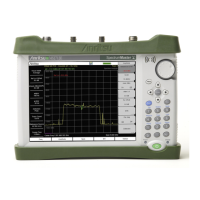
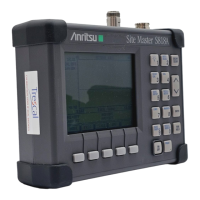

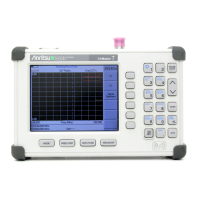
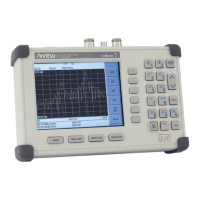



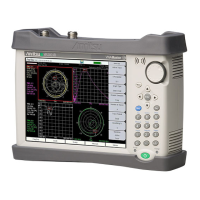


